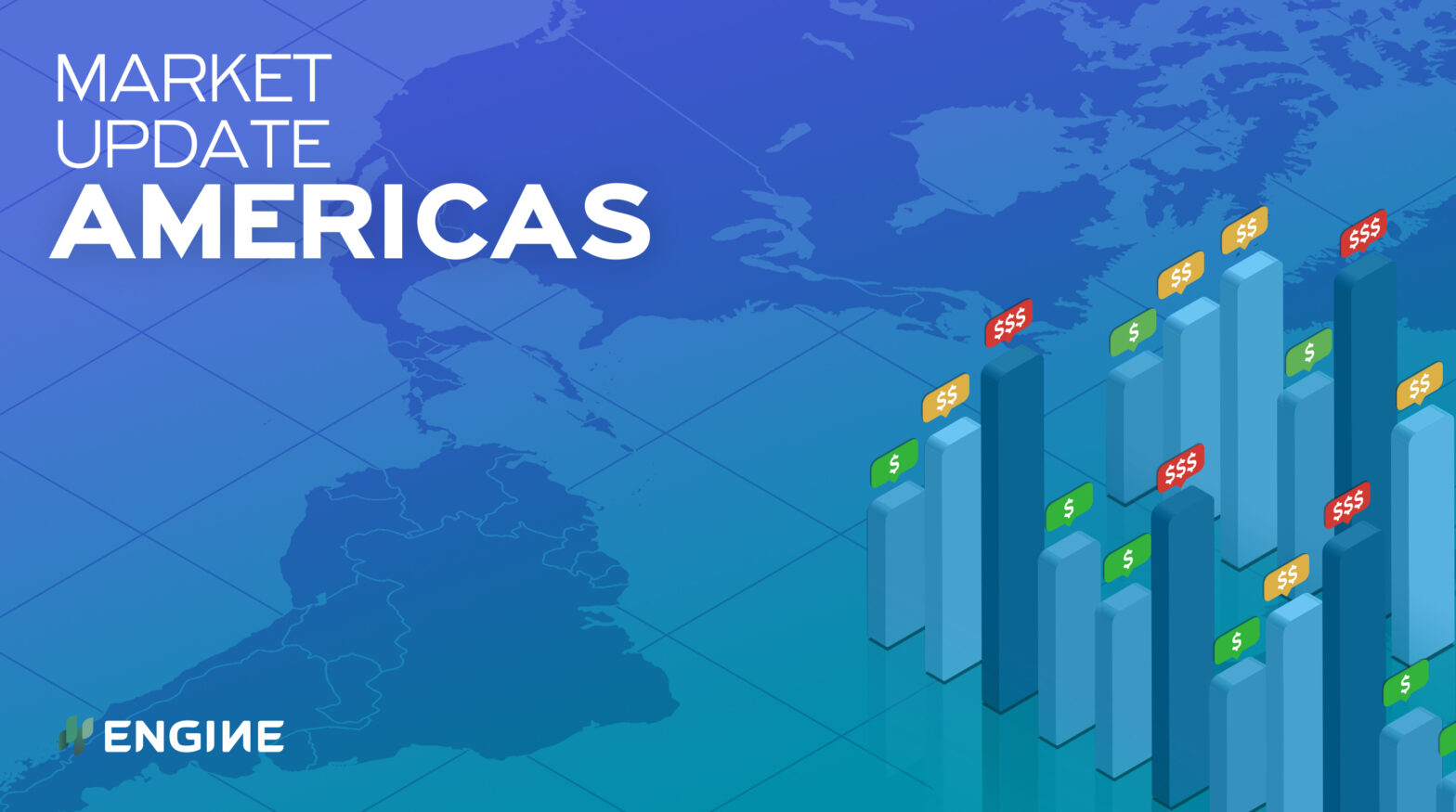Bunker values have edged up in several major ports in the Americas following massive drops in the previous session, and prices are on track for sharp losses on the week.
Changes on the day to 09.30 CST (14.30 GMT) today:
- VLSFO prices up in Houston ($9/mt), New York ($8/mt), Zona Comun ($6/mt), Balboa and Los Angeles ($1/mt)
- LSMGO prices up in New York ($6/mt), Balboa ($5/mt), Houston, Los Angeles and Zona Comun ($3/mt)
- HSFO380 prices up in New York ($5/mt) and Houston ($4/mt), and steady in Los Angeles and Balboa
HSFO380 is tight for prompt dates in Houston, where the earliest delivery date is five days out with certain suppliers. The price of the grade has held up better from Brent’s downward pull than VLSFO has in the past week, shedding $23/mt against $32/mt for VLSFO. The steeper VLSFO price drop has narrowed Houston’s Hi5 spread to $107/mt.
Fuel oils are tight in Ecuador as suppliers await new loadings. The earliest delivery dates are about 8-10 days out.
Prompt product has also been tight in Callao further down along the South American west coast. Callao’s VLSFO has swung to narrow $3-4/mt discounts to La Libertad and Guayaquil now, after having been at a sustained premium of more than $10/mt over the two Ecuadorian ports since the middle of last week.
Brent
The ICE Brent September futures contract has shed $1.39/bbl on the day, to $72.55/bbl at 09.30 CST (14.30 GMT).
Brent is heading for a 4% drop on the week amid the prospect of more OPEC+ oil in the market, signs of a dip in US fuel demand and rising Covid-19 cases in Europe and Asia.
A breakthrough in the impasse between Saudi Arabia and the UAE this week is expected to bring more oil to the market. OPEC+ negotiations stranded earlier this month when the UAE rejected the group’s output plan unless its baseline production level would be updated from October 2018.
Other OPEC+ members had voted in favour of easing production cuts by 2 million b/d in increments between August and December, and extend their output management pact from April next year to the end of that year.
The UAE is thought to have been given a concession for a baseline update to get behind the group’s output plan.
“More importantly to markets, though, is whether it will lead to a flurry of demands from other members for similar concessions, leading to the spectre of much higher volumes of oil hitting global markets as growth start to slow in parts of the world,” OANDA market analyst Jeffrey Halley said in a research note today.
Growing US gasoline and distillate stocks has also weighed on Brent this week. Figures from the US Energy Information Administration (EIA) showed builds of 1 million bbls for gasoline and 3.7 million bbls for distillate fuels in the week ending 9 July, pointing to lower road and industrial fuel demand. Investors looked beyond another big crude stock draw to focus on a dip in refinery utilisation and weaker fuel demand.
